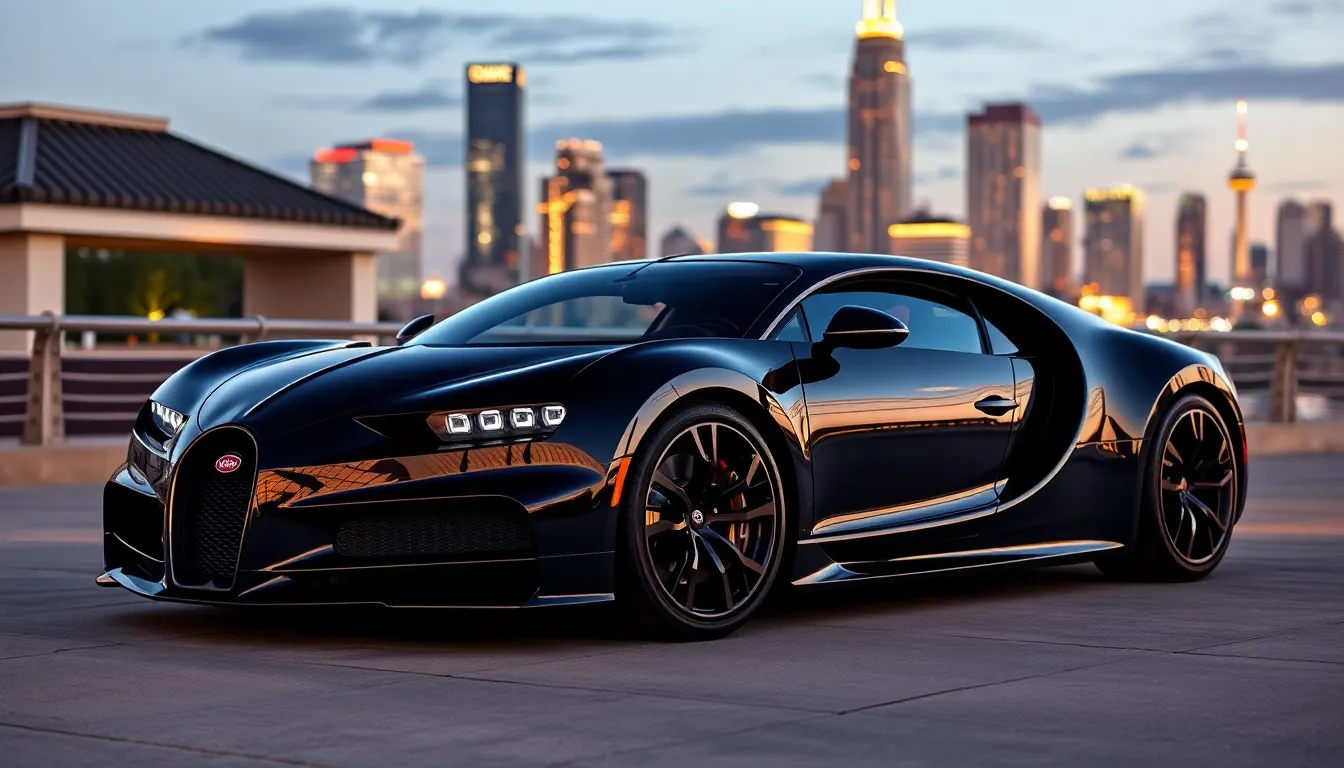Luxury automobiles represent the pinnacle of automotive engineering where cutting-edge technology meets uncompromising craftsmanship. We’re talking about vehicles that don’t just transport you from point A to point B – they deliver an experience that’s worth every penny of their premium price tags.
The industry’s most expensive cars aren’t merely status symbols. They’re rolling masterpieces that showcase revolutionary innovations years before they reach mainstream vehicles. From hand-stitched Italian leather interiors to engines that produce mind-blowing horsepower figures we can only dream about.
Whether you’re curious about what makes a car worth more than most people’s homes or you’re seriously considering adding one to your collection we’ll explore the intriguing area of ultra-luxury automotive excellence. These aren’t just cars – they’re investments in engineering artistry that hold their value while delivering unmatched performance and prestige.
Most Expensive Production Cars Ever Made
We’ve identified the automotive industry’s most extraordinary achievements in engineering excellence. These production vehicles represent the absolute pinnacle of luxury manufacturing and technological innovation.
Bugatti La Voiture Noire
Bugatti La Voiture Noire claims the title as the industry’s most expensive new car at $18.7 million. This one-off hypercar pays homage to the legendary Type 57 SC Atlantic from the 1930s. Bugatti crafted this masterpiece with their signature quad-turbocharged 8.0-liter W16 engine producing 1,479 horsepower.
Carbon fiber construction defines every surface of La Voiture Noire’s distinctive silhouette. Six exhaust outlets create a symphony of power while maintaining the vehicle’s elegant proportions. Bugatti delivered this exclusive model to a private collector in 2019, making it the most expensive production car ever sold.
Rolls-Royce Sweptail
Rolls-Royce Sweptail commanded $13 million when it debuted as a bespoke commission in 2017. This unique coupe draws inspiration from classic 1920s and 1930s Rolls-Royce models, particularly the Phantom I Round Door. Rolls-Royce’s craftsmen spent four years creating this one-off vehicle for an undisclosed collector.
Sweptail features a panoramic glass roof stretching across the entire cabin length. Custom luggage compartments replace traditional rear seats, designed specifically for the owner’s collection. Every detail reflects personalized luxury, from the handcrafted wood dashboard to the champagne cooler integrated behind the seats.
Koenigsegg CCXR Trevita
Koenigsegg CCXR Trevita reached production with only two units ever manufactured at $4.8 million each. Swedish hypercar manufacturer Koenigsegg developed their proprietary diamond weave carbon fiber specifically for this model. This revolutionary material contains actual diamonds woven into the carbon fiber, creating a sparkling finish under sunlight.
Trevita’s supercharged V8 engine delivers 1,018 horsepower through advanced ethanol fuel systems. Koenigsegg’s aerodynamic design principles maximize downforce while maintaining stunning visual appeal. Boxing champion Floyd Mayweather owns one of these rare specimens, highlighting the exclusivity of Koenigsegg’s diamond encrusted creation.
Luxury Sports Cars That Define Performance
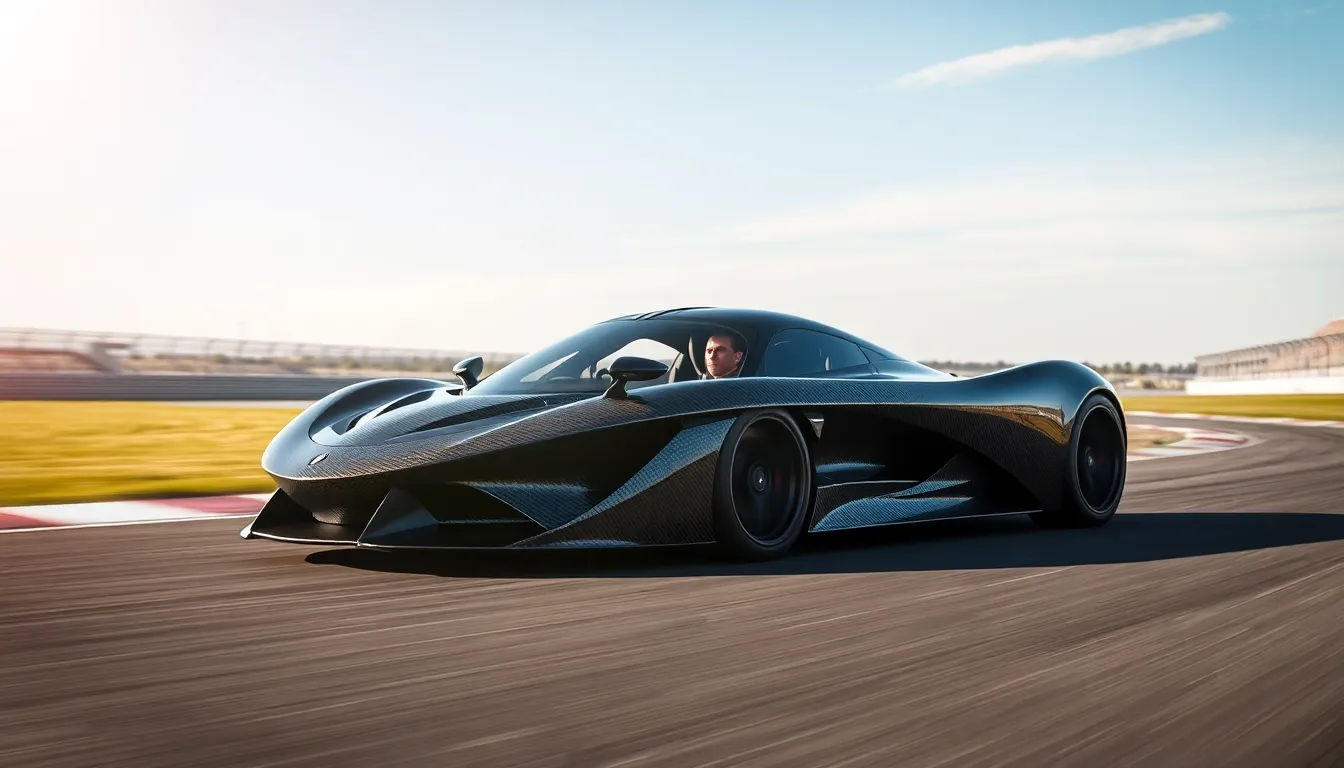
Performance luxury extends beyond mere price tags into the area of engineering excellence. These supercars represent the pinnacle of automotive achievement where cutting-edge technology meets breathtaking design.
McLaren Speedtail
McLaren Speedtail stands as the British manufacturer’s fastest production car ever created. This hybrid hypercar delivers 1,035 horsepower through its twin-turbo V8 engine paired with an electric motor system. We’ve seen McLaren achieve a remarkable top speed of 250 mph with this three-seat marvel that costs $2.25 million.
Carbon fiber construction keeps the Speedtail lightweight while aerodynamic efficiency reaches Formula 1 levels. Active aerodynamics adjust automatically to optimize downforce and reduce drag at different speeds. Only 106 units were produced making this streamlined beauty one of the most exclusive McLaren models ever released.
Ferrari LaFerrari Aperta
Ferrari LaFerrari Aperta represents the open-top version of Ferrari’s flagship hybrid supercar. This convertible masterpiece combines a 6.3-liter V12 engine with an electric motor to produce 950 horsepower total. We’ve witnessed Ferrari create only 210 examples of this $2.2 million convertible that accelerates from 0-60 mph in under 3 seconds.
Italian craftsmanship shines through every detail from the removable carbon fiber roof panels to the hand-stitched leather interior. Advanced traction control systems and electronic differential ensure optimal power delivery even in challenging driving conditions. Collectors consider the Aperta among the most desirable modern Ferraris due to its limited production and open-air driving experience.
Lamborghini Centenario
Lamborghini Centenario celebrates the 100th anniversary of founder Ferruccio Lamborghini’s birth. This naturally aspirated V12 beast generates 770 horsepower from its 6.5-liter engine that revs to 8,600 rpm. We’ve observed Lamborghini price this anniversary model at $1.9 million with only 40 units produced worldwide.
Aggressive styling features sharp angles and active aerodynamic elements that automatically adjust based on driving mode. Carbon fiber monocoque construction provides exceptional rigidity while keeping weight to a minimum. Track-focused suspension setup and rear-wheel steering deliver precision handling that makes the Centenario equally capable on road and circuit.
Ultra-Exclusive Limited Edition Vehicles

These magnificent machines transcend traditional automotive boundaries by combining Formula 1 technology with street legal engineering. Ultra exclusive limited edition vehicles represent the absolute pinnacle of automotive artistry where manufacturers create fewer than 500 units worldwide.
Aston Martin Valkyrie
Aston Martin Valkyrie transforms Formula 1 racing technology into a $3.2 million hypercar that delivers an unprecedented driving experience. We witness automotive history through this collaboration between Aston Martin and Red Bull Racing’s Adrian Newey design expertise. The naturally aspirated 6.5 liter Cosworth V12 engine produces 1,000 horsepower while weighing just 206 pounds.
Only 150 road going Valkyrie models will ever exist making each vehicle a collector’s dream investment. Carbon fiber construction keeps the total weight under 2,270 pounds creating an extraordinary power to weight ratio. Active aerodynamics generate over 1,800 pounds of downforce at 150 mph transforming public roads into personal racetracks.
Pagani Huayra BC Roadster
Pagani Huayra BC Roadster showcases Italian craftsmanship through its $3.4 million price tag and breathtaking attention to detail. We observe how Pagani’s Modena workshop hand builds each of the 40 roadster variants using aerospace grade carbon fiber materials. The Mercedes AMG sourced twin turbocharged 6.0 liter V12 engine generates 791 horsepower through meticulously engineered components.
Removable carbon fiber roof panels transform this coupe into an open air masterpiece within minutes. Active aerodynamic flaps adjust automatically based on speed and cornering forces optimizing performance in real time. Interior appointments feature leather sourced from cattle raised at high altitudes ensuring the finest grain quality available.
Mercedes-AMG Project One
Mercedes AMG Project One brings Formula 1 hybrid technology directly from Lewis Hamilton’s championship winning race car to public roads. We recognize this $2.7 million hypercar as the most technologically advanced production vehicle ever created by Mercedes Benz. The 1.6 liter turbocharged V6 hybrid powertrain produces 1,063 horsepower using the same MGU K and MGU H systems from F1 racing.
Limited production of 275 units ensures exclusivity among the industry’s most discerning automotive collectors. Electric motors provide instant torque delivery while the turbocharger spins at 100,000 RPM creating unprecedented acceleration figures. The hybrid system enables pure electric driving for short distances demonstrating how racing technology advances sustainable mobility answers.
Classic Expensive Cars That Appreciate in Value
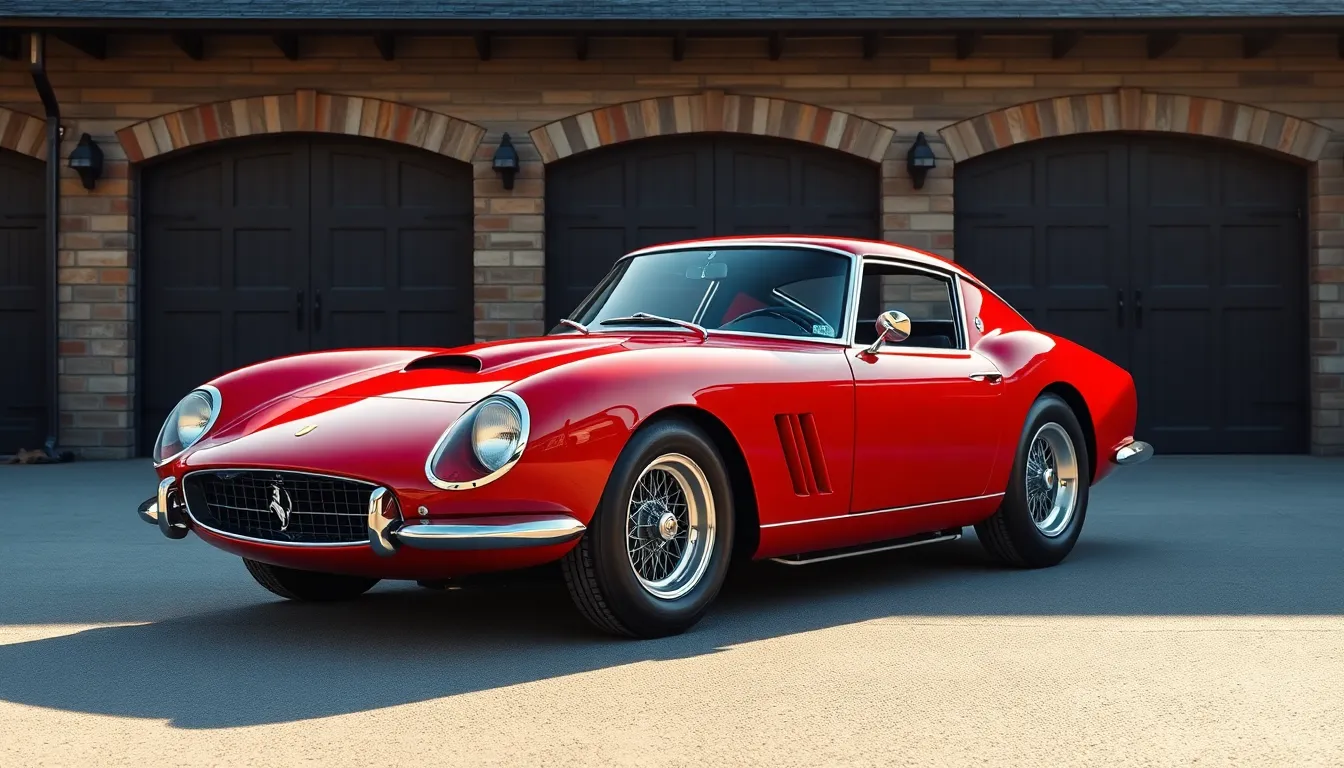
Classic expensive cars represent some of the finest automotive investments, transforming from mere transportation into treasured art pieces. We’ve witnessed these exceptional machines consistently outperform traditional investments while delivering pure automotive heritage.
1962 Ferrari 250 GTO
The 1962 Ferrari 250 GTO stands as the ultimate collector’s dream, with recent auction sales reaching $70 million in 2022. Enzo Ferrari himself approved only 36 of these racing masterpieces, making each one extraordinarily rare and valuable.
Built specifically for the Industry Sportscar Championship, the 250 GTO features a 3.0-liter Colombo V12 engine producing 300 horsepower. Racing pedigree flows through every curve of its Scaglietti-designed bodywork, which underwent extensive wind tunnel testing at the University of Pisa. Championship victories at Le Mans and Tour de France further cemented its legendary status among enthusiasts worldwide.
Appreciation rates for the 250 GTO have consistently exceeded 500% over the past two decades. Private collectors jealously guard these vehicles, with ownership often passed down through generations of automotive royalty. Values continue climbing as Ferrari’s racing heritage becomes increasingly recognized as irreplaceable automotive history.
1955 Mercedes-Benz 300 SLR Uhlenhaut Coupe
The 1955 Mercedes-Benz 300 SLR Uhlenhaut Coupe became the industry’s most expensive car ever sold when it reached $142 million at auction in May 2022. Chief engineer Rudolf Uhlenhaut created only two prototypes, making this the rarest production vehicle from the German manufacturer.
Racing technology from the W196 Formula 1 car powered the 300 SLR through its fuel-injected 3.0-liter straight-eight engine generating 310 horsepower. Magnesium bodywork kept weight to just 1,850 pounds while gullwing doors provided the distinctive aesthetic that defined Mercedes sports cars. Uhlenhaut himself used one prototype as his daily driver, regularly covering the 200 miles between Stuttgart and Munich in under two hours.
Historical significance drives the 300 SLR’s astronomical valuation beyond mere performance metrics. Mercedes withdrew from racing following the tragic 1955 Le Mans accident, making these vehicles the final chapter of their golden motorsport era. Collectors view ownership as preserving a pivotal moment in automotive and racing history.
1957 Ferrari 335 Sport Scaglietti
The 1957 Ferrari 335 Sport Scaglietti represents the pinnacle of 1950s racing technology, with surviving examples commanding prices exceeding $35 million at prestigious auctions. Ferrari built only four chassis of this ultimate sports racing car, designed specifically for endurance racing at Le Mans and the Mille Miglia.
Powering the 335 Sport was Ferrari’s largest racing engine of the era, a 4.1-liter Lampredi V12 producing 390 horsepower. Scaglietti crafted the aluminum bodywork by hand, creating flowing lines that balanced aerodynamic efficiency with stunning visual appeal. Racing legends including Mike Hawthorn and Peter Collins piloted these machines to victory across Europe’s most challenging circuits.
Investment potential for the 335 Sport continues growing as collectors recognize its historical importance in Ferrari’s racing legacy. Racing provenance significantly impacts individual car values, with vehicles that competed at Le Mans or the Mille Miglia commanding premium prices. Restoration expertise becomes increasingly valuable as owners seek to maintain these irreplaceable pieces of motorsport heritage.
Custom-Built Expensive Cars for Elite Collectors
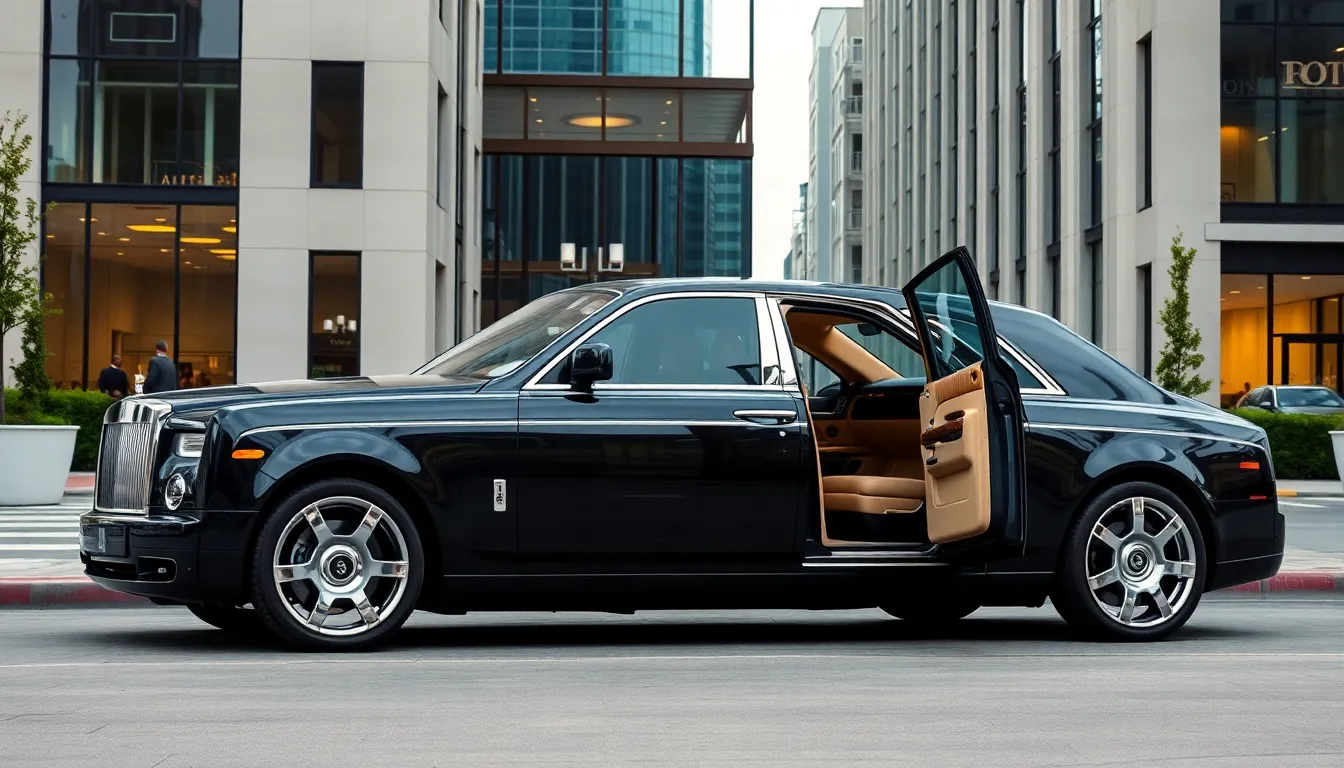
Custom built vehicles represent the ultimate expression of automotive luxury where discerning collectors commission manufacturers to create truly unique masterpieces. We witness the convergence of unlimited budgets with boundless creativity in these exclusive automotive works of art.
Rolls-Royce Phantom Extended Wheelbase
Rolls-Royce Phantom Extended Wheelbase exemplifies bespoke luxury manufacturing at its most refined level. We observe prices starting at $600,000 for the base model, with fully customized versions reaching upward of $1.5 million depending on individual specifications. The extended wheelbase adds 8.6 inches of rear passenger space compared to the standard model, creating an opulent sanctuary for elite travelers.
Craftsmen dedicate over 450 hours to hand building each Phantom Extended Wheelbase using traditional techniques passed down through generations. We find clients commissioning features like starlight headliners with personalized constellations, handwoven silk carpets, and custom paint schemes requiring 17 individual coats. The 6.75-liter twin-turbocharged V12 engine produces 563 horsepower while maintaining the signature Rolls-Royce “magic carpet ride” sensation.
Bentley Mulsanne Grand Limousine
Bentley Mulsanne Grand Limousine stands as the British manufacturer’s most exclusive offering for collectors seeking ultimate luxury transportation. We see production numbers deliberately limited to fewer than 15 units annually, with each vehicle requiring 6 months of meticulous hand craftsmanship. Pricing begins at $750,000 and can exceed $1.2 million with full customization packages.
Designers extend the wheelbase by 39 inches beyond the standard Mulsanne, creating a palatial rear compartment equipped with reclining airline-style seats and a full bar service. We discover features like handcrafted wood veneers from sustainably sourced English walnut trees, Mulliner diamond quilted leather upholstery, and climate-controlled champagne storage compartments. The twin-turbocharged 6.75-liter V8 engine delivers 505 horsepower while maintaining Bentley’s renowned refinement standards.
Maybach Exelero
Maybach Exelero represents one of the most extraordinary one-off luxury vehicles ever commissioned by an elite collector. We recognize this unique creation commanded a staggering $8 million price tag when it was built in 2005 for tire manufacturer Fulda as a high-speed test vehicle. The single example showcases extreme luxury combined with supercar performance capabilities that remain unmatched in the custom automotive industry.
Engineers equipped the Exelero with a twin-turbocharged 5.9-liter V12 engine producing 700 horsepower and 752 lb-ft of torque. We observe this extraordinary machine achieving a top speed of 218 mph while maintaining the signature Maybach comfort and luxury appointments. The carbon fiber body design creates an imposing presence measuring over 19 feet in length and weighing 5,864 pounds, making it one of the heaviest supercars ever constructed for private ownership.
Electric Expensive Cars Leading Innovation
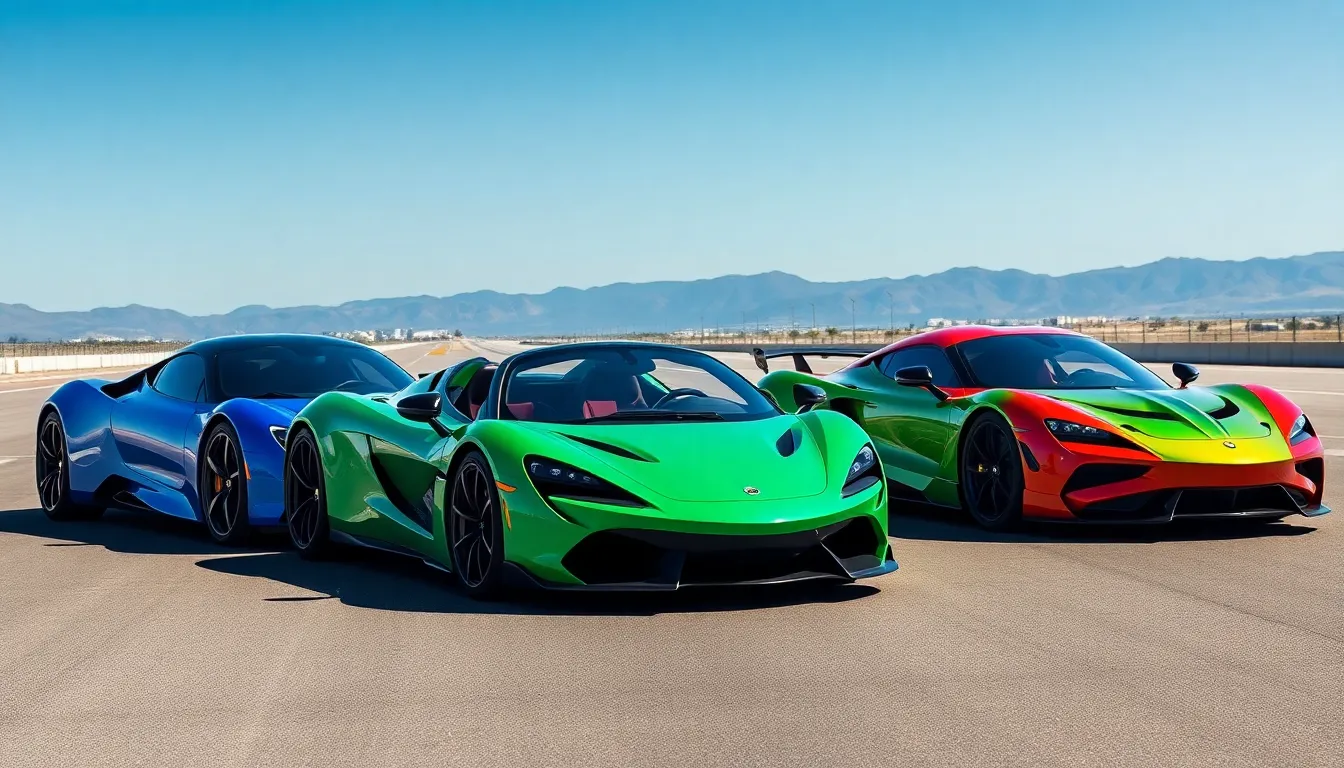
Electric powertrains now represent the cutting edge of automotive engineering excellence. We’re witnessing a transformation where electric hypercars combine sustainable technology with unprecedented performance levels.
Rimac Nevera
Rimac Nevera dominates the electric hypercar industry with its $2.4 million price tag and revolutionary all-electric powertrain. Four electric motors generate an astounding 1,914 horsepower, propelling this Croatian masterpiece from 0 to 60 mph in just 1.85 seconds. We’ve seen only 150 units produced, making each Nevera a collector’s dream that showcases the future of high-performance automotive engineering.
Advanced battery technology delivers 412 miles of range while maintaining track-ready performance capabilities. Carbon fiber construction keeps the weight down to 4,740 pounds even though the massive battery pack. Every Nevera features active aerodynamics and an advanced torque vectoring system that manages power distribution to each wheel with millisecond precision.
Lotus Evija
Lotus Evija redefines British automotive excellence through pure electric performance priced at $2.1 million per vehicle. This all-electric hypercar produces 1,972 horsepower through four electric motors, establishing itself as one of the most powerful production cars ever created. We’re looking at just 130 units worldwide, each representing Lotus’s commitment to lightweight engineering and aerodynamic perfection.
Revolutionary battery cooling technology enables consistent track performance without thermal limitations. Active aerodynamics generate up to 1,764 pounds of downforce at 200 mph, while the carbon fiber monocoque weighs just 139 pounds. Each Evija accelerates from 0 to 186 mph in under nine seconds, demonstrating how electric power can exceed traditional combustion engine capabilities.
Pininfarina Battista
Pininfarina Battista merges Italian design artistry with electric hypercar performance in a $2.2 million package limited to 150 global examples. Four electric motors produce 1,900 horsepower and 1,696 lb-ft of torque, delivering acceleration that rivals Formula 1 race cars. We’re witnessing automotive history as each Battista represents the first car to bear the Pininfarina badge as a manufacturer rather than just a design house.
Sophisticated carbon fiber construction achieves a dry weight of 4,387 pounds while maintaining structural integrity for track use. Advanced regenerative braking captures energy during deceleration, extending the 280-mile range between charges. Each Battista offers five driving modes that transform the car’s character from comfortable grand tourer to track-focused hypercar, proving that electric propulsion enhances rather than compromises driving dynamics.
What Makes These Expensive Cars Worth Their Price
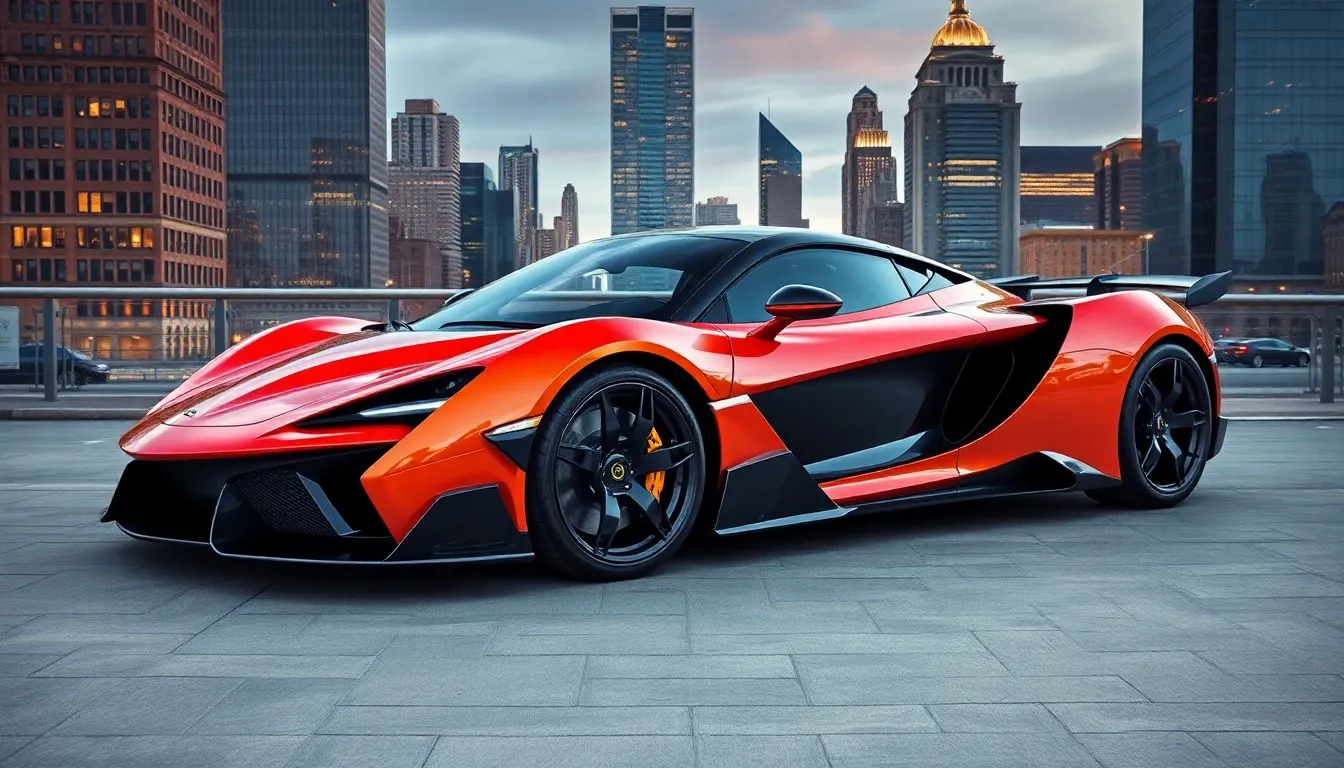
Understanding the value proposition behind luxury automobiles reveals why discerning collectors invest millions in these extraordinary machines.
Advanced Engineering and Technology
Formula 1 technology directly influences hypercar development, bringing race-proven innovations to street-legal vehicles. We see this integration in the Mercedes-AMG Project One’s 1.6-liter turbocharged V6 hybrid powertrain, which delivers 1,063 horsepower using actual F1 components. Bugatti’s La Voiture Noire showcases a quad-turbocharged W16 engine that represents decades of engineering refinement and produces unprecedented power levels.
Electric propulsion systems push boundaries with the Rimac Nevera’s 1,914-horsepower all-electric drivetrain accelerating from 0 to 60 mph in 1.85 seconds. Advanced battery management systems in the Lotus Evija generate 1,972 horsepower while maintaining optimal weight distribution through strategic component placement. Carbon fiber monocoques like those in the Aston Martin Valkyrie weigh just 2,270 pounds even though housing a naturally aspirated 6.5-liter Cosworth V12 engine producing 1,000 horsepower.
Aerodynamic engineering creates downforce levels that rival dedicated race cars, with active suspension systems automatically adjusting to road conditions in real time. Sophisticated traction control algorithms monitor thousands of data points per second, ensuring optimal performance across varying driving scenarios.
Handcrafted Materials and Interiors
Diamond weave carbon fiber distinguishes the Koenigsegg CCXR Trevita from conventional supercars, with only two units featuring this exclusive material treatment. Pagani Huayra BC Roadster interiors showcase hand-stitched Italian leather combined with machined aluminum components that require hundreds of hours to complete. Each Rolls-Royce Phantom Extended Wheelbase interior takes craftsmen over 450 hours to assemble, incorporating personalized wood veneers and custom embroidery patterns.
Precious metal accents include 18-karat gold trim pieces and platinum-plated controls that undergo multiple polishing stages for mirror-like finishes. Hand-painted coachwork on vehicles like the Ferrari LaFerrari Aperta requires master painters to apply up to 15 individual color layers. Interior materials often include exotic woods like Macassar ebony and rare leather hides sourced from exact regions known for superior quality.
Bespoke customization allows owners to specify unique design elements, from custom-woven carpets to personalized dashboard layouts that reflect individual preferences. Quality control processes involve multiple inspection stages where skilled artisans examine every surface detail before final approval.
Brand Heritage and Exclusivity
Century-old legacies like Ferrari’s racing heritage directly influence modern supercar development, with technologies proven on Formula 1 circuits finding their way into road cars. Mercedes-Benz’s motorsport DNA spans over 130 years, contributing engineering expertise that justifies premium pricing through proven performance credentials. Aston Martin’s association with luxury and sophistication dates back to 1913, creating brand equity that transcends mere transportation needs.
Limited production numbers create artificial scarcity that drives collector demand, with models like the Lamborghini Centenario restricted to just 40 units worldwide. Investment potential increases significantly when manufacturers produce fewer than 500 examples, as seen with ultra-exclusive hypercars that appreciate faster than traditional financial instruments. Waiting lists for new Bugatti models often extend beyond two years, demonstrating sustained demand even though multimillion-dollar price tags.
Racing pedigree validates engineering claims through competitive success, with manufacturers like McLaren leveraging decades of Formula 1 experience to develop road cars. Historical significance plays a crucial role in valuation, as demonstrated by the 1955 Mercedes-Benz 300 SLR Uhlenhaut Coupe selling for $142 million at auction. Brand prestige creates emotional connections that justify premium pricing beyond pure performance metrics.
How to Finance and Insure Expensive Cars
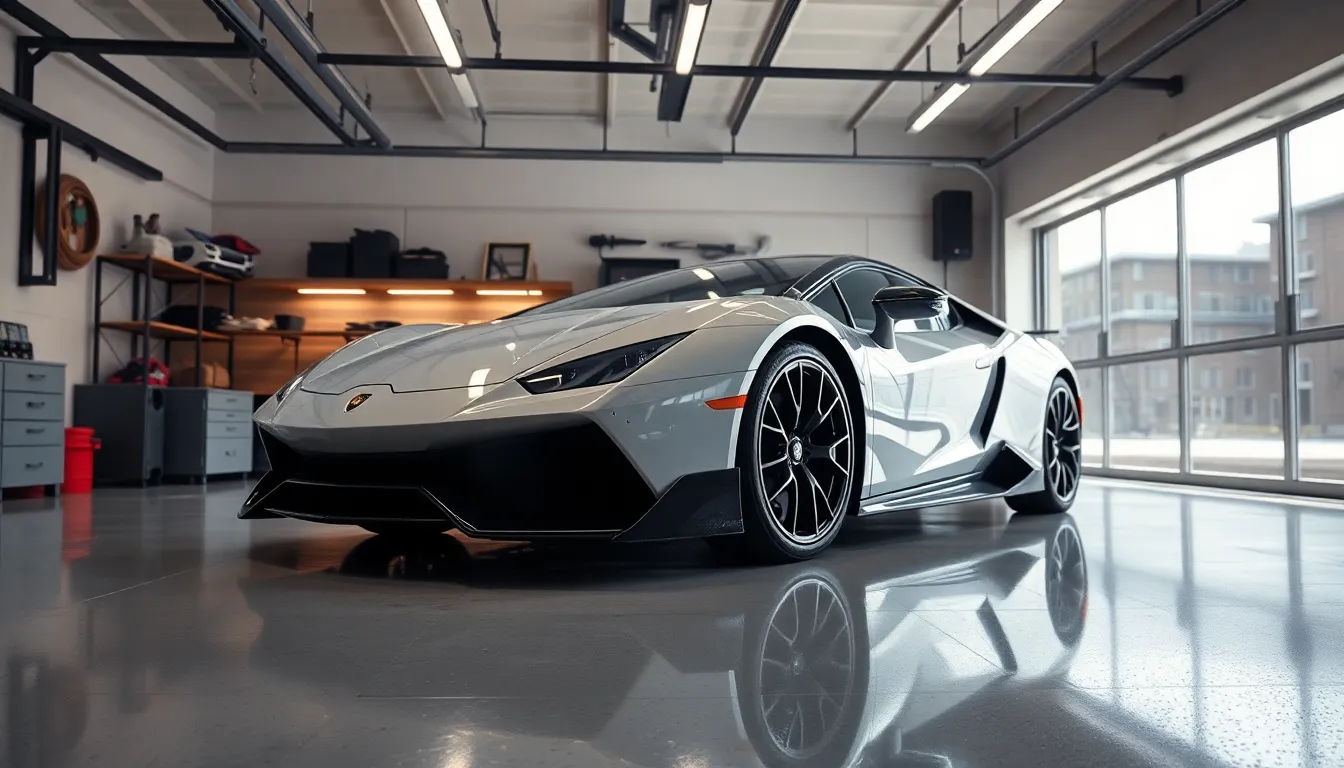
Owning a million-dollar hypercar or ultra-luxury vehicle requires specialized financial planning beyond traditional auto loans. We’ll explore the unique financing and insurance industry for these extraordinary machines.
Specialized Luxury Car Financing Options
Asset-based lending provides the most flexible financing solution for expensive cars priced above $500,000. Banks like JPMorgan Chase and Bank of America offer luxury vehicle loans with loan-to-value ratios up to 80% for qualified borrowers, though most lenders cap individual loans at $1 million to $2 million.
Portfolio lending through private wealth management divisions allows high-net-worth individuals to leverage their investment portfolios as collateral. We’ve seen interest rates range from 3.5% to 7.5% depending on the borrower’s relationship with the institution and the vehicle’s collectibility factor.
Specialty finance companies like Putnam Leasing and Premier Financial Services focus exclusively on luxury and exotic vehicles. These lenders understand depreciation patterns for brands like Bugatti, Koenigsegg, and Pagani, offering terms up to 84 months for vehicles maintaining strong resale values.
Lease programs through manufacturers provide attractive options for new hypercars, with residual values often set at 60-70% for limited production models. Ferrari Financial Services and Lamborghini Financial offer closed-end leases that protect lessees from unexpected depreciation while providing upgrade flexibility.
High-Value Vehicle Insurance Requirements
Agreed value policies replace standard actual cash value coverage for expensive cars, establishing a predetermined payout amount before any loss occurs. Companies like Hagerty, Grundy, and American Collectors Insurance specialize in agreed value coverage for vehicles worth $250,000 and above.
Comprehensive coverage limits must exceed the vehicle’s full replacement cost, typically requiring $3 million to $5 million in coverage for cars like the McLaren Speedtail or Ferrari LaFerrari Aperta. We recommend reviewing coverage annually as these vehicles can appreciate significantly.
Storage and usage restrictions apply to most high-value policies, requiring enclosed garage storage and limiting annual mileage to 2,500-5,000 miles. Insurers often mandate professional appraisals every 2-3 years and may require GPS tracking systems for vehicles exceeding $1 million in value.
Specialty coverage endorsements protect against unique risks facing expensive cars, including diminished value coverage after accidents and spare parts coverage for discontinued models. Additional living expenses coverage becomes crucial when your daily driver costs $500,000 or more.
Maintenance and Storage Considerations
Climate-controlled storage represents a non-negotiable requirement for preserving multi-million-dollar investments like the Bugatti La Voiture Noire or Rolls-Royce Sweptail. Professional storage facilities charge $300-800 per month but provide humidity control, security monitoring, and regular maintenance checks.
Factory-authorized service becomes exponentially more expensive as vehicle values increase, with annual maintenance costs ranging from $15,000-50,000 for hypercars. Brands like Koenigsegg and Pagani require specialized technician certification and proprietary diagnostic equipment available only at authorized service centers.
Extended warranty programs offer peace of mind for complex vehicles like the Mercedes-AMG Project One, though coverage typically costs 8-12% of the vehicle’s value annually. We recommend purchasing manufacturer warranties that include concierge service and worldwide roadside assistance.
Documentation and provenance maintenance becomes critical for investment-grade vehicles, requiring detailed service records, ownership history, and authenticity certificates. Professional automotive appraisers charge $500-1,500 for annual valuations needed to maintain proper insurance coverage and document appreciation for tax purposes.
Conclusion
The industry of expensive cars represents far more than luxury transportation—it’s where cutting-edge technology meets unparalleled artistry. From multi-million-dollar hypercars to appreciating classics we’ve witnessed the evolution of automotive excellence across every category.
Whether you’re drawn to the raw power of combustion engines or the innovative potential of electric hypercars the luxury automotive market continues pushing boundaries. These extraordinary machines offer exclusive ownership experiences that extend well beyond their impressive specifications.
For those considering entry into this elite market understanding the complete ownership network is crucial. From specialized financing to expert maintenance requirements owning expensive cars demands careful planning and dedicated resources.
We believe the future of luxury automobiles will continue blending traditional craftsmanship with revolutionary technology creating even more remarkable vehicles for discerning collectors worldwide.
Frequently Asked Questions
What makes luxury cars worth their high price tags?
Luxury cars justify their cost through advanced Formula 1 technology, handcrafted materials, and meticulous engineering. They feature cutting-edge innovations like hybrid powertrains, carbon fiber construction, and bespoke customization. Limited production numbers, brand heritage, and potential investment value also contribute to their worth, making them more than transportation—they’re automotive art pieces.
Which is the most expensive production car ever made?
The Bugatti La Voiture Noire holds the record at $18.7 million. This one-off hypercar features a quad-turbocharged W16 engine and distinctive carbon fiber bodywork. Other contenders include the Rolls-Royce Sweptail at $13 million and the Koenigsegg CCXR Trevita at $4.8 million, each representing the pinnacle of automotive craftsmanship.
Are classic expensive cars good investments?
Yes, many classic luxury cars appreciate significantly over time. The 1962 Ferrari 250 GTO has reached $70 million at auction, while the 1955 Mercedes-Benz 300 SLR Uhlenhaut Coupe sold for $142 million. These vehicles transform from transportation into treasured art pieces, with their rarity and historical significance driving investment potential.
What financing options exist for luxury car purchases?
High-end vehicle financing goes beyond traditional auto loans. Options include asset-based lending, portfolio lending for high-net-worth individuals, and specialized luxury car financing programs. These arrangements often consider the borrower’s total assets and the vehicle’s investment potential rather than just income-to-debt ratios.
How do electric luxury cars compare to traditional supercars?
Electric luxury cars are leading automotive innovation with impressive performance. The Rimac Nevera ($2.4 million) produces 1,914 horsepower and accelerates 0-60 mph in 1.85 seconds. The Lotus Evija generates 1,972 horsepower, while the Pininfarina Battista combines Italian artistry with 1,900 horsepower, proving electric technology can match traditional supercar performance.
What insurance considerations apply to expensive cars?
High-value vehicles require specialized insurance with agreed value policies that exceed replacement costs. Coverage must include comprehensive protection for multi-million-dollar investments, climate-controlled storage requirements, and factory-authorized service provisions. Standard auto insurance is inadequate for these premium vehicles requiring expert evaluation and specialized coverage.
What maintenance requirements do luxury cars have?
Expensive cars demand factory-authorized service, climate-controlled storage, and specialized maintenance protocols. These vehicles require expert technicians familiar with advanced technologies like hybrid systems and carbon fiber construction. Proper maintenance is crucial for preserving both performance and investment value, often costing significantly more than standard vehicle upkeep.
How exclusive are limited edition luxury cars?
Ultra-exclusive vehicles like the Aston Martin Valkyrie (150 units), Pagani Huayra BC Roadster (40 units), and Mercedes-AMG Project One (275 units) represent extreme rarity. These limited production numbers, often fewer than 500 units worldwide, combine Formula 1 technology with street-legal engineering, making them highly coveted collector’s items.

